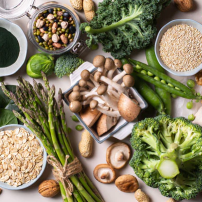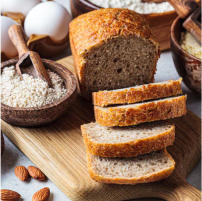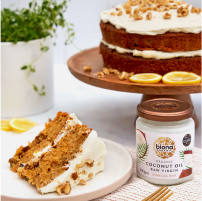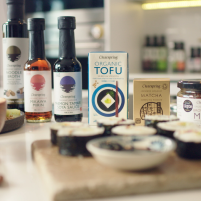When it comes to staying in shape and being a healthy weight, the GI diet can be a handy tool. Originally designed with diabetics in mind, the Glycaemic Index is based on how foods affect your blood sugar level. But it has also been adopted by people looking to eat well and maintain a healthy weight. So we're going to take a look at the Glycaemic Index and how it can help with weight.
A GI Diet focuses on carbs. Some carbs are good for the body, and some not so good. If you follow a low GI diet, it's all about sticking to the carbohydrates that won't raise your blood sugars too high. They'll also fill you up meaning they're great for people that are looking to stay at a healthy weight. Here's all you need to know about the Glycaemic Index and how it can help with weight.
Carbohydrate Foods
Carbohydrate foods are the body’s main energy source. Most carbohydrates are broken down in the gut and released as glucose (sugar) into the blood stream. Foods containing carbohydrates include:
- breads
- cereals
- rice
- pasta
- noodles
- fruit
- vegetables
- sugar
- honey
- biscuits
- cakes etc
The Glycaemic Index and How it Can Help with Weight
What Is Glycaemic Index (GI)?
Here we're going to take a look at the Glycaemic Index and how it can help with weight. Most carbohydrates foods are digested to produce glucose but they do so at different rates, some slowly and others more quickly. The glycaemic index (GI) is a ranking of carbohydrate foods according to their effect on blood sugar levels. It was originally designed to help people with diabetes make better food choices but research has found that it might be useful in helping people to get to and stay at a healthy weight.
How Does GI Help With Weight?
High blood sugar from high GI foods causes increases in the amount of insulin your body makes. Insulin helps to lower blood sugar levels after a meal but it also is important in helping your body to store other nutrients including fat. High levels of insulin encourage your body to store fat, rather than burn it. This means that when blood sugar increases, it can encourage your body to store fat.
If you eat high GI foods your blood sugar will be higher, followed by higher insulin levels and more fat storage. When you eat low GI foods, your blood sugar level stays lower (but not too low) and so insulin stays lower and this can encourage your body to burn fat.
Low GI foods are also more satisfying and help keep your metabolism running faster. This is why they are important for helping anyone to lose weight or to keep off weight they have already lost.
Which Foods Are Low & Which Are High GI?
Only foods with carbohydrate can raise blood sugar levels. Any foods with no carbohydrate are low GI foods. Foods with no carbohydrate include:
- meat
- chicken
- fish
- eggs
Foods that have carbohydrate can be divided into low or high GI foods although there can be variations between the GI of a food depending on the way it is cooked, the particular variety or the season.
| High GI Foods | Low GI Foods |
|
Most breads (brown or white) Potatoes (mashed and baked) Rice (white) Cooked fruit Some root veg e.g. parsnips Foods high in sugar (sweets, biscuits, cakes) Cereal bars Ketchup |
Porridge or high fibre cereals Pasta (dried or fresh, wholemeal) Noodles Milk (use skimmed or low fat) Brown rice and basmati rice Fresh fruit Most vegetables and salads Pulses - peas, beans and lentils Meat, poultry, fish and eggs |
The Importance of Fruit & Vegetables
Fruit and vegetables are one of the most important food groups for your heart and overall health. They are a source of fibre as well as vitamins and antioxidants. Aim to have a minimum of five servings of fruit and vegetables per day!
One serving of fruit and vegetables includes:
- 1 medium sized fruit e.g. apple, orange.
- 2 small fruits e.g. plum, kiwi
- 1 bowl of salad – lettuce, tomato, cucumber
- 4 dessert spoons of cooked vegetables – fresh or frozen
Please note, this blog is for informational purposes only and should not replace medical advice.
Author: Rachel Jennings
Checked and updated: 5 August 2021













